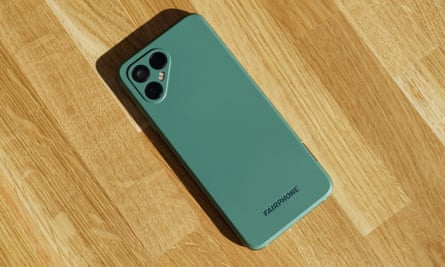The most ethical, repairable smartphone you can buy is back with a new model, this time with 5G and a fresh look but a weak camera.
The new Fairphone 4 costs £499 from the Dutch cooperative of the same name and continues the mission to make phones from materials sourced as ethically as possible that you can take apart and fix without an electrical engineering degree.
The new model has a much more modern design than its predecessors with an aluminium body, Gorilla Glass 5 screen and a removable 100% recycled plastic back.
It is still chunky at 10.5mm thick and 225g heavy, but the sides are rounded and smooth, the body is super solid, the plastic back is tactile and the glass front looks modern, if not quite sleek.
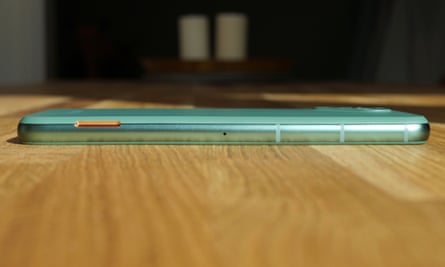
The 6.3in LCD screen will not win any awards but is fairly bright and crisp. The vertical viewing angles are not the best and it has relatively chunky bezels at the top and bottom, more akin to a budget phone, but nothing egregious.
The one thing it lacks is a headphone socket; the USB-C port will handle audio duties with the right adapter or you will have to use Bluetooth headphones.
Specifications
Screen: 6.3in FHD+ LCD (410ppi)
Processor: Qualcomm Snapdragon 750G
RAM: 6 or 8GB
Storage: 128 or 256GB + microSD card
Operating system: Fairphone OS based on Android 11
Camera: dual 48MP rear, 25MP selfie camera
Connectivity: 5G, esim, wifi6, NFC, Bluetooth 5.1 and GPS
Water resistance: IP54 (rain resistance)
Dimensions: 162 x 75.5 x 10.5mm
Weight: 225g
5G and about two day’s battery
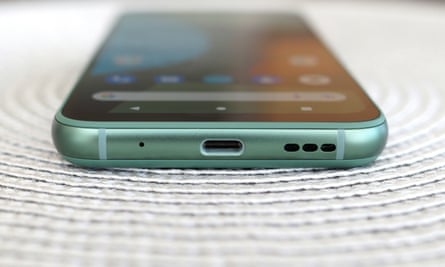
The Fairphone 4 has a Qualcomm Snapdragon 750G chip, which is one of the firm’s mid-range processors with 5G and has a similar level of performance to top smartphones from 2018 such as the OnePlus 6.
Apps open fairly quickly, but can take a beat or two to be ready to use. Social media feeds occasionally stutter as you scroll through them and information panels take a second to load in Google Maps.
The battery lasts roughly two days with the screen used for about five hours with apps, browsing and taking photos, spending about two hours on 5G the rest on wifi, which is similar to some of the longer-lasting smartphones available. More careful use will probably see longer or you can swap in a spare fully charged battery in seconds.
Sustainability
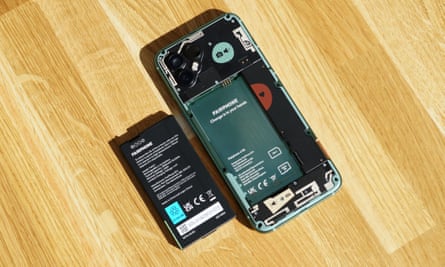
Fairphone says the battery will maintain at least 80% of its original capacity for more than 500 full charge cycles and a replacement or spare costs £25.95.
The Fairphone 4 has a five-year warranty. Users can repair the phone themselves by replacing slot-in modules using a standard screwdriver. A replacement display will cost £69.95, the back £17.95 while other components such as cameras, ports and speakers cost between £12.95 and £69.95, all of which will be available until at least 2027.
Fairphone has committed to making its handset e-waste neutral by recycling the equivalent volume of electronics per phone sold. It includes fair trade gold and silver, ethically sourced aluminium and tungsten, plus recycled tin, copper, rare earth metals and plastic. The firm also tops up the pay of its contract manufacturing workers to a living wage.
Fairphone OS

The phone ships with a standard version of Android 11 with very little in the way of modification and no bloatware. It will be immediately familiar to anyone who has used an Android phone in the last four years and ran fine with no noticeable bugs or issues in testing.
Fairphone will guarantee software support for the phone until the end of 2025, including monthly security updates for two years from release and then quarterly security updates from then on, but is aiming for extended support until 2027. That would make it the longest-lasting Android device and the only one to rival Apple’s seven years of support for the iPhone 6S.
Camera
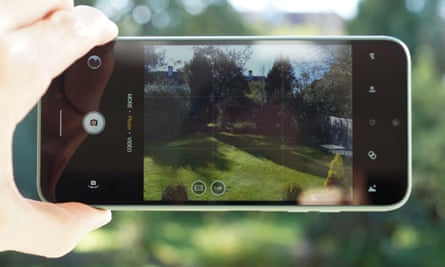
The Fairphone 4 has a dual 48-megapixel system on the back with wide and ultrawide cameras and a 25-megapixel selfie camera above the screen.
The back cameras are more numerous than Fairphone’s previous efforts, but neither are serious rivals to top phones. The main camera can produce decent photos in bright light, but really struggles in high contrast scenes producing muddy, washed out snaps soft on detail. Low light performance was poor with a lot of grain. The camera was often slow to shoot photos too and was prone to movement blur.
The ultrawide camera produces images that look good at a glance in bright daylight, but hazy on closer inspection particularly towards the edge. The selfie camera is pretty good, producing detail-rich and well-balanced images in reasonable light.
It is possible to shoot good images with the Fairphone 4, but it takes a lot more work and most photos are disappointing compared with even much cheaper rivals, something the company says it will improve through software updates.
Observations
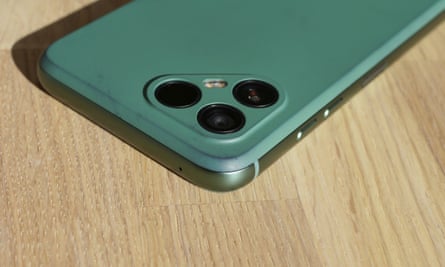
There’s no option for common gestures such as double-tapping the screen or lifting the phone to wake it.
The stereo speakers are reasonable for watching video.
Mobile and wifi reception was weaker than a similarly priced iPhone, OnePlus or Samsung on the same networks.
Price
The Fairphone 4 costs £499 with 6GB of RAM and 128GB of storage or £569 with 8GB and 256GB.
For comparison, the Google Pixel 4a costs £349, the iPhone SE costs £389, the OnePlus Nord 2 costs £399, the Samsung Galaxy S21 costs £769 and the iPhone 13 costs £779.
Verdict
The Fairphone 4 removes some, but not all of the compromises previous models have made for two big upsides: being as ethical and easily repairable as possible.
It is chunky but with a more modern, distinctive design. It has a decent screen and 5G, but the camera isn’t great. Battery life is good but the processor isn’t particularly fast – fine for now but likely slow in five years.
A five-year warranty and a pledge of six years of software support is far longer than any other Android manufacturer. And there’s nothing else on the market that is designed to be taken apart and repaired at home with just a standard screwdriver. There’s no headphone socket though, and wifi and mobile performance was a little weak.
As with previous models, the Fairphone 4 best competes with the likes of the £300 OnePlus Nord CE, meaning you are paying about a £200 premium for ethical construction and vastly longer support.
Overall it is a great device for people who want to support the company’s movement and are prepared to pay over the odds to do so. Just do not expect it to match an iPhone or Samsung in experience.
Pros: ethical manufacturing, sustainable materials, truly repairable, solidly built, 5G, microSD card slot, removable battery, bloat-free, five-year warranty, software support for up to six years.
Cons: average performance, chunky, expensive for the specs, average camera, weaker wifi/mobile signal, no headphone socket.
